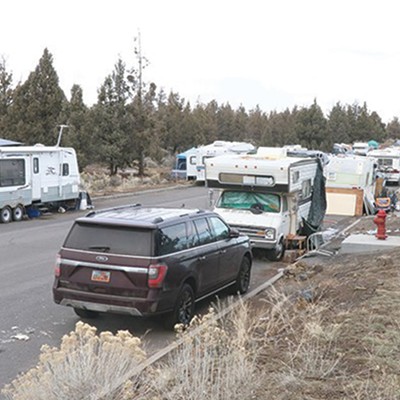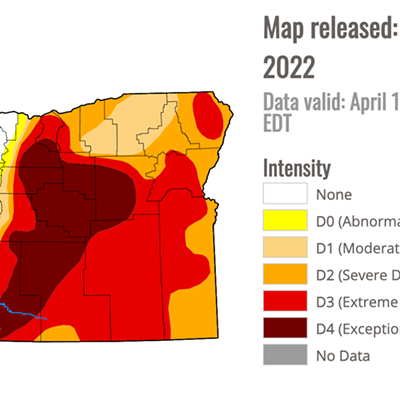A recent television report about coyotes living in Bend surprised some people. It shouldn't, since there are coyotes living all over North America today, eating mule deer fawns, chickens and cats—thanks to the actions of the government trappers that started killing coyotes over 100 years ago. They thought they could kill coyotes as easily as they did wolves, but the coyote has outfoxed them.
History has shown that killing coyotes indiscriminately only generates more coyotes, a fact discovered by U.S.Fish & Wildlife biologists in the '60s. Back then I was investigating stomach contents in coyotes brought to the Hart Mountain National Antelope Refuge, looking for evidence coyotes were impacting the survival of antelope kids. I never did find an antelope kid, but instead found hundreds of mice, gophers, ground squirrels and rabbits, and once, a sage grouse.
On another table next to me a USFW wildlife biologist was inspecting the ovaries of females, and was surprised to see up to eight ovarian scars on many of the females, which meant coyote populations were rebounding with a vengeance.
The relentless destruction of coyotes in Texas only generated more coyotes that eventually spread to Missouri, and from there to Ohio and Chicago. Missouri put a stop to it in 1958. Back then they didn't realize coyotes are a breed of animal with instincts far different than wolves. Wolves are territorial family animals and couldn't adjust to the methods used by trappers to kill them. Within a couple of years they were removed from not only Oregon, but the West.
The coyote was hit the same way. Their numbers dropped in the late '40s and '50s, but as a consequence, mule deer were overrunning Central Oregon. Cougar numbers were also at their lowest, and with concurrent lack of wolves, mule deer populations went sky high. That situation prompted the Oregon Department of Fish and Wildlife (the Oregon Game Commission in those days) to open a doe season.
There were so many mule deer in the deer winter ranges around the south end of the Deschutes National Forest and into the Bureau of Land Management lands, that browse lines—the horizontal skirts of picked-off vegetation—in the pines, junipers and bitterbrush were all too distinct along Highway 31. At about the same time the coyotes of Central Oregon and all over the West said, "Enough is enough."
Instead of being territorial and family animals like their cousins the wolf, coyotes became polygamists with one male running with up to three females. Instead of one couple generating two to three pups, they began developing heteroicous family units of three to four females with up to eight pups, and within 20 years coyotes had begun to spread across North America.
It was the same story for Arizona; trappers and coyote shooters there generated more coyotes that slowly spread to the suburbs of Los Angeles, north to Sacramento, from there to Medford and the Oregon Coast, then the suburbs of Portland, where they also eat cats. Now there are coyote/domestic dog and wolf hybrids running around in Maine and southeast Canada that will, in not too short a time, prove to be a real nuisance in the agricultural and metropolitan communities, where livestock and domestic cats will be favored targets.
So, if you want your cat to be safe, bring it into the house and keep it there. Of course, it won't like it; cats are genetically engineered to kill things and that's why they like being out of doors. But that old adage, "He who lives by the sword dies by the sword," will catch up with them in time.
In the more than 60 years I've lived in Central Oregon I have had only ONE person say to me, "Oh, I love my cats too much to ever let them go outside." Of course, there are many other cat-keepers who also feel that way, but by and large, most people allow their cats to run loose.
In the census of 2012 there were 162,277 people living in Deschutes County. If half of those people kept a cat (no one, in my opinion, "owns" a cat) that would mean there were over 81,000 cats in Deschutes County. Now, here it is four years later; no wonder the coyotes are here...they're classical opportunists.
The bottom line is, if you want your cats to live longer and enjoy them, keep them inside. They'll get used to it in about a month; the cat food and cat litter people will love you, and so will millions of birds and other native wildlife. Still, I doubt if the coyotes and their hybrids will head back out to the deserts and forests.


























